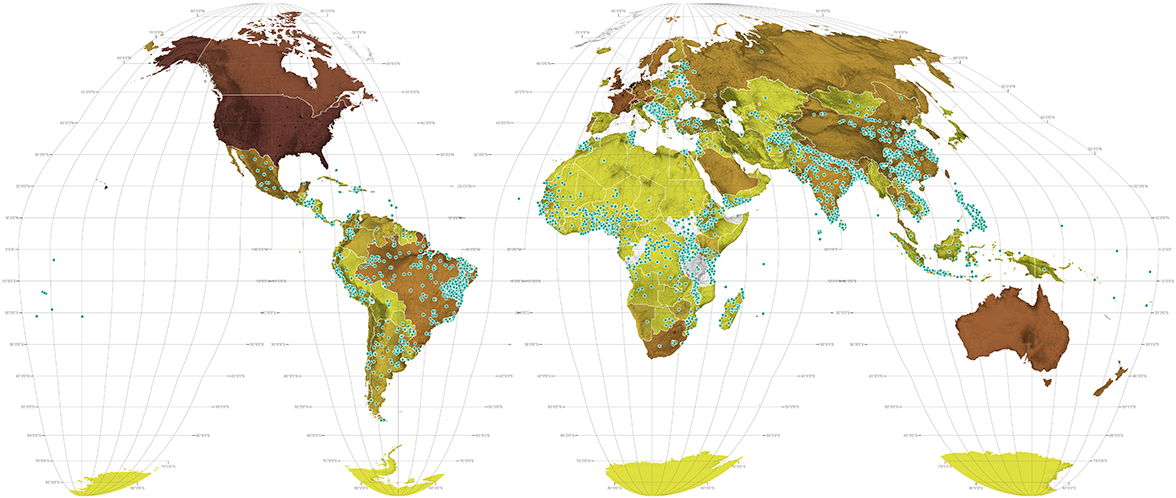Gaining an accurate account of global conservation spending, where it comes from and where it goes, is fraught with complications. According to a study by Waldron et al. the total annual expenditure on global biodiversity conservation between 2001 and 2008 was approximately 21.5 billion USD. 1 The bulk of the world's biodiversity budget comes from governments (in particular the United States and Germany) as well as the World Bank, but the big international non-government organizations (BINGOs such as Conservation International, the Nature Conservancy, the World Wildlife Fund, the African Wildlife Foundation, the Wilderness Conservation Society and Greenpeace) also play significant roles in moving investment around the world. In 2014, these six not-for-profit BINGOs together raised and then spent over 1.5 billion USD on conservation related projects and activism world-wide. 2
A 2011 study conducted for the Secretariat of the Convention of Biological Diversity concluded that it would take between 77 and 81 billion USD per annum to achieve and maintain 17% terrestrial and 10% marine protected area as per Aichi target 11. 3 The report concluded that the cost of satisfying all 20 of the Aichi targets lies somewhere between 150-440 billion USD per year. In 2012, a study by environmental economists Donal McCarthy and Stuart Butchart used Important Bird Areas (IBAs) as a corollary for biodiversity more broadly and concluded that if the world's total IBAs (just over the Aichi target of 17% of terrestrial surface) were to be effectively protected and managed the cost would be 57.8 billion USD per year. 4 They extrapolated from this to conclude that the costs of securing and maintaining a global network of protected areas would be 76.1 billion USD annually — essentially corroborating the CBD's estimates. 5
1 Anthony Waldron, et al., "Targeting global conservation funding to limit immediate biodiversity declines," Proceedings of the National Academy of Sciences of the United States of America 110, no. 29 (2013): 12144-12148.
2 This figure is derived from annual accounts available at Charity Navigator, http://www.charitynavigator.org (accessed June,1, 2016).
3 Convention on Biological Diversity High-level Panel on Global Assessment of Resources for Implementing the Strategic Plan for Biodiversity 2011-2020, "Resourcing the Aichi Biodiversity Targets: A First Assessment of the Resources Required for Implementing the Strategic Plan for Biodiversity 2011-2020." Available at https://www.cbd.int/doc/meetings/fin/hlpgar-sp-01/official/hlpgar-sp-01-01-report-en.pdf (accessed June 1, 2016).
4 Donald P. McCarthy, et al., "Financial Costs of Meeting Global Biodiversity Conservation Targets: Current Spending and Unmet Needs," Science 338, no. 6109 (2012): 946-949.
5 ibid
1. National Biodiversity Conservation Spending
A. Waldron, et al., "Targeting global conservation funding to limit immediate biodiversity declines," Proceedings of the National Academy of Sciences of the United States of America 110, no. 29 (2013): 12144-12148. Available at http://dx.doi.org/10.1073/pnas.1221370110.
A. Waldron, et al., Data from: "Targeting global conservation funding to limit immediate biodiversity declines". Dryad Digital Repository (2013). Available at http://dx.doi.org/10.5061/dryad.p69t1.
2. International Aid Projects
Michael Tierney, et al., "More Dollars than Sense: Refining Our Knowledge of Development Finance Using AidData," World Development 39, no. 11 (2011): 1891-1906. Available at AidData.org.


